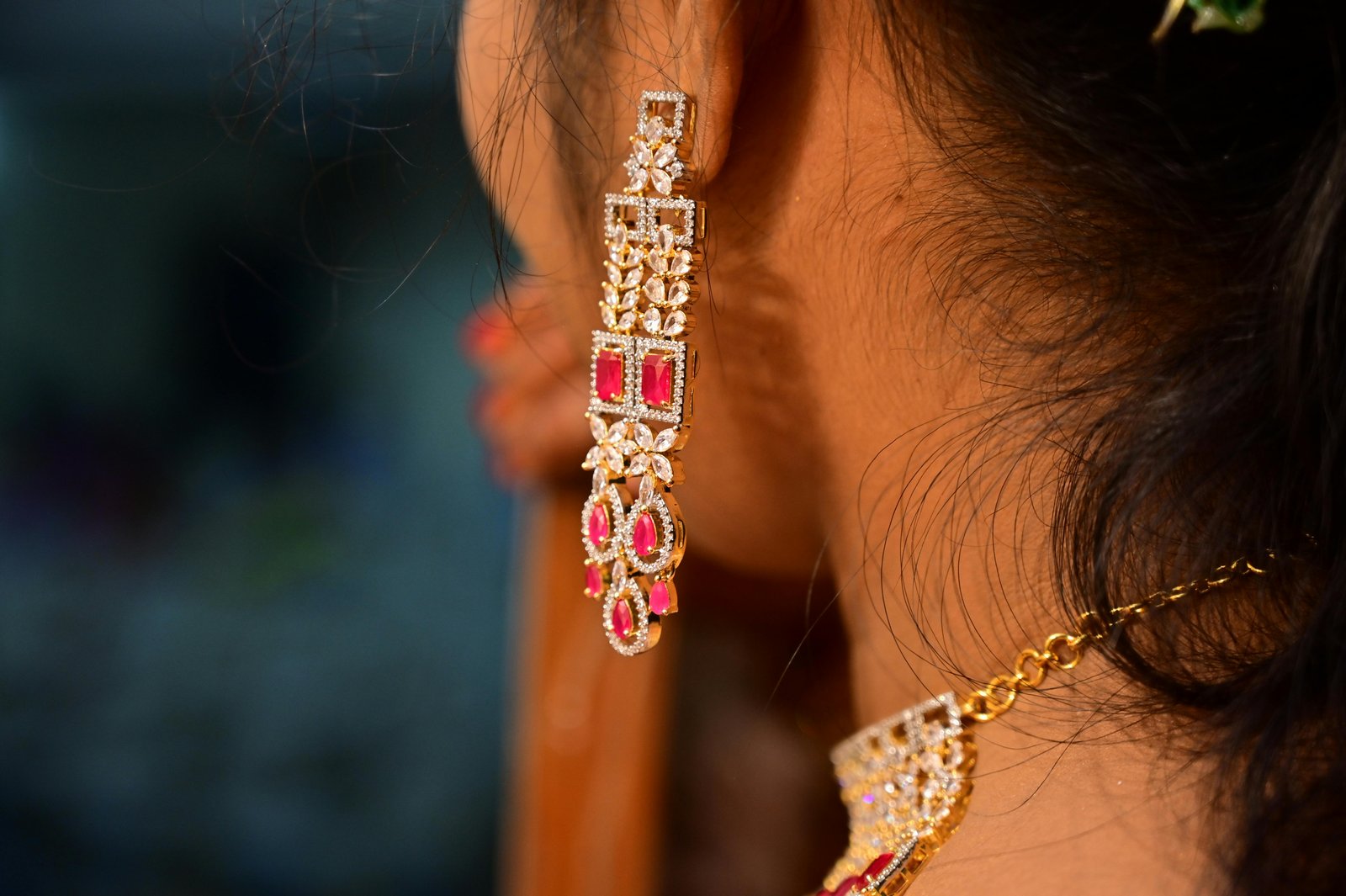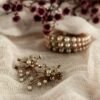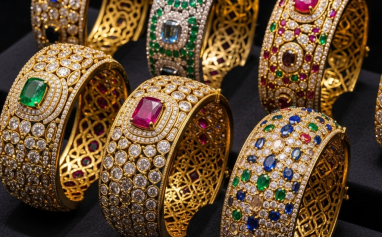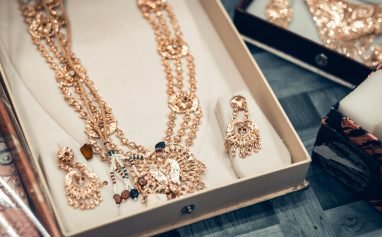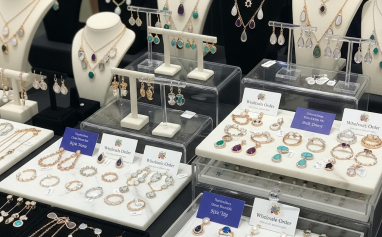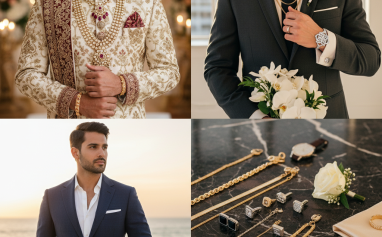Best-Selling Wedding Jewelry Sets Globally (2025 Retailer’s Guide)
Wedding jewelry doesn’t just “sell”—it anchors entire seasons, defines store layouts, and drives attachment sales for months. If you’re a retailer planning this year’s assortment, this comprehensive guide distills what’s actually moving worldwide (and why), what set configurations outperform in each region, the metals and stones that convert, and the merchandising math you can use to plan inventory with confidence. You’ll also find sourcing guidance (with internal-link anchor text ready to use, like bridal jewelry manufacturer, lab grown jewelry manufacturer, and vermeil jewelry manufacturer) and an end-of-article checklist you can hand straight to your team.
The Global Picture: What “Best-Selling” Means in Practice
Across major markets, wedding sets share a few consistent traits:
- Complete looks win. Necklace + earrings is the universal core; add a bracelet or bangle to lift AOV (average order value) by 20–35%. In South Asia and the Middle East, adding a maang tikka, nath (nose ring), or matha patti can push AOV 40–60% higher during peak wedding months.
- Gold is still the foundation. In India and the Gulf, 22k and 18k yellow gold dominate bridal sets. In North America and Europe, 14k/18k white gold and platinum sell best for classic diamond looks; yellow gold is the fastest climber YoY with modern brides.
- Lab-grown accelerates “big look” value. Retailers report that when a set features lab-grown diamonds or diamond-equivalent stones (e.g., moissanite) sized 1–3 ct total weight across the set, conversion improves without compromising margin targets.
- Timeless silhouettes lead unit velocity. Halo, floral clusters, and graduated rivière/tennis motifs outperform trend spikes over a full year.
- Bundling beats à-la-carte in weddings. Pairs and tri-sets (necklace–earring–bracelet) run higher sell-through and lower returns than selling pieces separately.
Typical performance figures you can plan around
- Peak-season set sell-through: 65–80% within 90 days for well-balanced assortments.
- Return rates: 3–5% for complete sets (lower than solo fashion items).
- Attachment rate to bands/stackables: 1.3×–1.7× when sets are displayed alongside matching rings and bangles.
- Core price corridors that move volume:
- Fashion bridal (vermeil, CZ/moissanite): $150–$600
- Fine bridal (14k/18k with lab-grown or small natural diamonds): $800–$2,500
- Heritage heavy-gold sets (India/Gulf, 22k): ₹200,000–₹1,200,000 / $2,500–$15,000+ depending on gram weight and workmanship.
Planning tip: For each 10 sets you list online, ensure at least 3 are value-engineered bundles (e.g., “Necklace + Earrings + Free Maang Tikka”) and 2 are premium heavy-workmanship hero sets for window/hero imagery. That mix typically captures 70–80% of wedding-season demand.
Regional Best-Sellers: What Moves Where (and Why)
1) India
What sells
- 22k gold Kundan/Polki-inspired sets with meenakari touches for North Indian weddings.
- Temple jewelry (Haram + Lakshmi motifs) in South India; long layered necklaces are common.
- Diamond sets in 18k (necklace + studs + bracelet), with floral and halo patterns for sangeet/reception looks.
- Lightweight fusion sets in 14k/18k for pre-wedding events and trousseau gifting.
Winning configurations
- Necklace + Earrings + Maang Tikka is the workhorse.
- Add a Nath for high-impact bridal photography (perceived value jump of ~25–30%).
- Multi-layered raani haar + choker + jhumka pairings for premium shoppers.
Price & materials
- 22k sets: gram weight 60–150 g for premium temple and heritage looks.
- 18k diamond sets: best-selling TW (total diamond weight) 1.00–3.00 ct equivalent for mid-to-premium budgets.
- Lab-grown diamonds expand size without budget blowouts; moissanite is a strong alternative for sparkle-focused buyers.
Merchandising
- Curate three depth tiers:
- Heirloom (hand-crafted, heavy 22k)
- Signature (18k with diamonds or lab-grown)
- Celebration (vermeil/moissanite/CZ for events)
Visuals: show side-profile craftsmanship (meenakari, filigree, nakshi) and layering shots with saree/lehengas in bridal palettes.
2) Middle East & North Africa (MENA)
What sells
- 22k/21k gold sets with bold arabesque filigree, mirror-polish finishes, and statement chokers.
- Y-neck and bib styles with matching drop earrings.
- Bridal bangles: stacked sets of 4–12 pieces drive attachments.
Price & materials
- Sets often anchor on 70–180 g gold weight for premium shoppers.
- Diamonds are used, but gold presence carries the premium; lab-grown allows diamond-intense looks without extreme prices.
Merchandising
- Present sets on high-shine backgrounds; provide gram-weight transparency and buyback/upgrade messaging, which increases conversion in gold-savvy markets.
3) North America
What sells
- White gold and platinum with diamond-rich but delicate aesthetics: rivière/tennis necklaces, halo/solitaire drops, and pavé line bracelets.
- Yellow gold resurgence in modern minimal sets: rounded link motifs, bezel stations, and pearls.
- Lab-grown diamond sets dominate value-driven brides wanting bigger sparkle.
Price & materials
- Best-selling corridor: $1,200–$3,500 for 14k/18k with lab-grown; $2,500–$6,000 for natural diamond mid-tier.
- Pearl accents (akoya/freshwater) are reliable for bridesmaids/secondary events.
Merchandising
- Bundle “Ceremony Set” (necklace + earrings) with optional “Reception Bracelet” add-on.
- Offer financing/BNPL prominently—bridal customers convert 10–15% more when financing is available at checkout.
4) Europe
What sells
- Understated luxury: diamond rivière in white gold, minimal bezel stations, and vintage-inspired milgrain sets.
- Platinum for classicists; yellow gold for fashion-forward brides.
- Sustainable choices (recycled gold, lab-grown diamonds) have strong appeal.
Price & materials
- Mid-premium corridor: €1,200–€3,000 for fine sets; premium €4,000–€8,000 for platinum/natural diamond classics.
Merchandising
- Storytelling around craft origin, responsible sourcing, and repair/resize services increases trust and basket size.
5) Southeast Asia
What sells
- 18k yellow gold with diamond or moissanite accents; rose gold for modern brides.
- Pearl-accented sets for traditional ceremonies.
- Statement chokers paired with drop earrings for photos.
Merchandising
- Localized size guidance (necklace lengths for petite frames), lightweight designs for hot climates, and sweat-resistant plating info improve satisfaction.
Styles That Consistently Outsell Others
- Classic Rivière/Tennis Sets
A uniform line of stones along a necklace and bracelet with matching studs. Works across dresses and lehengas. In lab-grown or moissanite, this becomes a volume monster.
- Halo Floral Sets
A central stone circled by smaller stones—maximizes perceived size without huge cost. Pairs well with cluster studs and delicate line bracelet.
- Temple & Heritage Sets (India/Gulf)
Carved motifs, coin/pendant elements, and multi-layered harams. These are celebratory and giftable; they anchor photo-led merchandising.
- Kundan/Polki-Inspired Looks
Uncut-style stones in rich gold settings, often with meenakari on the reverse. Works for mehendi/sangeet and the main ceremony.
- Pearl-Diamond Hybrids
Akoya/freshwater pearls with diamond halos—timeless and bridal without trend risk. Excellent for mothers of the bride and bridesmaids.
- Minimal Modern Sets
Bezel stations, slender paperclip links, petite drops. Yellow gold is the hero metal for this trend globally.
Metals & Stones: What to Stock (and in What Ratios)
Metals
- India/MENA: 22k (primary), 18k (for diamond-intense work), vermeil as an accessible entry.
- NA/EU: 14k/18k white or yellow gold; platinum for premium; vermeil for gifting and secondary events.
Recommended mix (units) for a balanced wedding season
- Fine gold (14k/18k): 45–55%
- Vermeil & sterling-core fashion bridal: 20–30%
- Platinum: 5–10% (EU/NA tilt)
- 22k heavy sets (India/MENA): 25–40% of those market assortments
Stones
- Lab-grown diamonds: fastest-growing by unit; ideal for 1–3 ct TW sets.
- Natural diamonds: premium core; keep classic SKUs that never date.
- Moissanite: high-sparkle, value-led; pairs well with vermeil or 14k.
- Polki/Kundan looks: cultural essential in India; ceremonial must-carry.
- Pearls: evergreen support category; raise attach rates for bridesmaids.
Plating & Finish That Keep Reviews High
- Gold vermeil (thick gold over sterling) is the sweet spot for budget bridal and gifts. Look for 2.5 microns+ plating thickness for better longevity and fewer returns.
- Rhodium on white gold/platinum enhances brightness and scratch resistance; specify palladium-enhanced white gold where possible to reduce yellowing risk.
- E-coat on vermeil/sterling reduces tarnish in humid climates; vital for Indian coastal regions and Southeast Asia.
Assortment Framework You Can Copy
Build your wedding set line with five buyer archetypes:
- The Heirloom Bride – wants weight and heritage
- 22k temple or Polki-inspired set with matching earrings and bangles
- Ticket: ₹400,000–₹1,200,000 / $5,000–$15,000+
- Display with macro shots of carving/meenakari
- The Classicist – diamond elegance for ceremony and reception
- 18k/14k white gold rivière set with studs + line bracelet
- Ticket: $2,000–$6,000 / €1,800–€5,500
- The Modern Minimalist – clean, on-trend
- Yellow gold station necklace + bezel studs + slim bracelet
- Ticket: $600–$1,800
- The Value-Maximizer – biggest look per dollar
- Lab-grown or moissanite halo set; optional matching ring
- Ticket: $800–$2,500
- The Festive Gifter – family and trousseau shoppers
- Gold vermeil or sterling with durable plating; pearls/CZ accents
- Ticket: $150–$600
Unit planning example for 100 sets (NA/EU)
- Classicist: 30
- Modern Minimalist: 25
- Value-Maximizer: 25
- Festive Gifter: 15
- Heirloom (platinum/high diamond): 5
Unit planning example for 100 sets (India/MENA)
- Heirloom (22k heavy/heritage): 30
- Classicist (18k diamond): 25
- Value-Maximizer (lab-grown/moissanite): 20
- Festive Gifter (vermeil/pearl/CZ): 15
- Modern Minimalist (yellow gold contemporary): 10
Product Content That Converts (with Real Numbers to Aim For)
- Photo sets: 6–8 images per SKU, including neck/back clasp, scale on model, and macro of setting.
- Video: 8–15 seconds in natural light; expect +10–20% conversion vs. photo-only pages.
- Size guidance: Clear necklace lengths (14/16/18/20 in or 35/40/45/50 cm), earring drop in mm, bracelet lengths and extenders.
- Gifting readiness: Branded box + polishing cloth; “ships in 24–72 hours” messaging boosts urgency.
- Care & warranty: A 6–12 month plating refresh for vermeil reduces returns by 1–2 percentage points.
Pricing, Margin, and Cash-Flow Guardrails
- Target blended margins
- Fine gold/platinum with diamonds: 48–58% gross margin
- Lab-grown/moissanite fine: 55–65%
- Vermeil/sterling bridal: 60–70%
- Threshold pricing:
- Keep at least 40% of your catalog in your market’s prime price corridor (see regional sections).
- Keep at least 40% of your catalog in your market’s prime price corridor (see regional sections).
- Pre-order windows:
- For made-to-order heavy sets, use 10–20 day lead times; show progress updates to cut cancellations.
- For made-to-order heavy sets, use 10–20 day lead times; show progress updates to cut cancellations.
- Buyback/Exchange (India/MENA):
- Gold value protection programs can lift conversion 8–12% and encourage upsizing.
Compliance & Sourcing: What Buyers Ask (So You Should Answer)
- Metal/stone disclosure: Karat, plating thickness (if vermeil), lab-grown vs natural, and any treatment notes.
- Nickel & allergy info: EU/UK compliance labeling prevents negative reviews.
- Sustainability: Offer recycled gold options where feasible and certify lab-grown origin for transparency.
- Aftercare: Resize/repair policies; typical turnaround 5–10 business days for fine items.
Where to Source: Manufacturer Partners & Internal Links
When you set up your category pages and supplier guides, use internal anchor text (no external URLs here). This helps both UX and SEO:
- Partner with a seasoned bridal jewelry manufacturer for temple, Kundan/Polki-inspired, and classic diamond sets.
- For value-driven sparkle and consistent supply, align with a lab grown jewelry manufacturer that can support 1–3 ct TW sets and custom bundle requests.
- To scale entry-to-mid price points with strong durability, source a vermeil jewelry manufacturer that guarantees 2.5+ microns plating and e-coat.
- Round out your stack with a moissanite jewelry supplier, pearl jewelry manufacturer, and custom CAD bridal atelier for bespoke builds.
Local Indian Favorites: Set Ideas That Fly Off Shelves
- Temple Lakshmi Haram Set: Long haram + choker + jhumka + vanki (armlet) + waist belt (oddiyanam) for premium trousseau.
- Kundan-Look Choker Trio: Choker + layered raani haar + tikka; enamel detailing in bridal greens/reds.
- Diamond Reception Set: 18k white gold rivière + halo studs + line bracelet (lab-grown for bigger TW without price shock).
- Pearl-Polki Fusion: Multi-strand pearl choker with Polki-style center and matching earrings for mehendi/sangeet.
- Lightweight Everyday Bridal: 14k yellow gold station necklace + small drops + slim bangle—perfect for post-wedding wear (keeps reviews glowing).
E-Commerce Ops: How to Present and Fulfill
- Badging: “Wedding Best-Seller,” “New,” “Ready to Ship,” and “Limited Gold Weight” badges drive clicks.
- Size filters: By karat, metal color, stone type (lab-grown/natural/moissanite/pearl), and style (riviere, choker, temple).
- Shipping SLAs: Show exact prep windows (e.g., Ships in 48 hours).
- Insurance/Signature: For sets priced above $1,000/₹85,000, require signature on delivery to cut loss.
- Packaging: Magnetic-close hard box with velvet inserts; add travel pouch to reduce damage and raise perceived value.
In-Store Playbook: Displays That Trigger “Yes”
- Color stories: Match sets with dupattas/sarees or wedding palette swatches; color-coordinated vignettes lift dwell time.
- Lighting: 4,000–5,000K with high CRI shows true gold tone and diamond fire.
- Mirrors & selfies: A selfie-station near the bridal case adds 10–15% to try-on rates.
- Consultation flow: 20-minute guided session with 3 trays: Classic, Cultural Heritage, Modern Minimal—close rate improves when choice is structured.
- Maintenance upsell: Offer an annual clean-and-check; attach at 30–40% for fine sets.
Quick Reference: Global Best-Selling Set Archetypes
- India: 22k temple/Kundan sets; 18k diamond reception sets; choker + raani haar + tikka.
- MENA: Bold 22k filigree sets; Y-neck bibs; bangle stacks.
- North America: Diamond rivière + studs + line bracelet in white/yellow gold; lab-grown value bundles.
- Europe: Platinum/white gold minimalism; vintage-milgrain accents; sustainability narratives.
- Southeast Asia: 18k yellow/rose gold with pearl or moissanite accents; climate-friendly lightweight pieces.
Wedding Jewelry Set Checklist (Hand to Your Team)
- Five-archetype assortment in stock (Heirloom/Classicist/Modern/Value/Gifter)
- Metals: 22k (if applicable), 18k/14k, platinum (EU/NA), vermeil with 2.5+ microns
- Stones: mix of natural, lab-grown, moissanite, pearls; TW tiers from 1–3 ct best-sellers
- Bundles: at least 30% of catalog with 2–3 piece bundles
- Photos: 6–8 angles + macro; video on PDPs
- Policies: resize/repair, plating refresh (vermeil), insured shipping
- Financing/BNPL badges and delivery timelines visible
Conclusion: Why Retailers Choose Nakassi
Brides around the world converge on a few truths: complete sets, timeless silhouettes, and visible craftsmanship sell—again and again. Your job is to curate those winners for your market and present them with clarity, credible materials, and reliable fulfillment.
Nakassi makes that easy. We combine cultural craftsmanship (from temple-work and Kundan-inspired designs to modern rivière minimalism) with advanced manufacturing for lab-grown and moissanite sparkle, durable vermeil finishes, and gold-standard fine jewelry. Whether you need fast-moving value bundles or heirloom-grade showstoppers, Nakassi can build a data-backed assortment, support custom CAD, and deliver consistent quality—season after season.
If you’re ready to scale your wedding category with sets that convert, talk to Nakassi about tailored collections, private-label support, and reliable production across metals and stones—all with retailer-friendly margins and timelines.

Brijesh brings a decade of experience in SEO and a deep love for jewelry to his writing. He excels at creating content that shines both on the page and in search engines, ensuring every story about gems and craftsmanship reaches the right audience.

